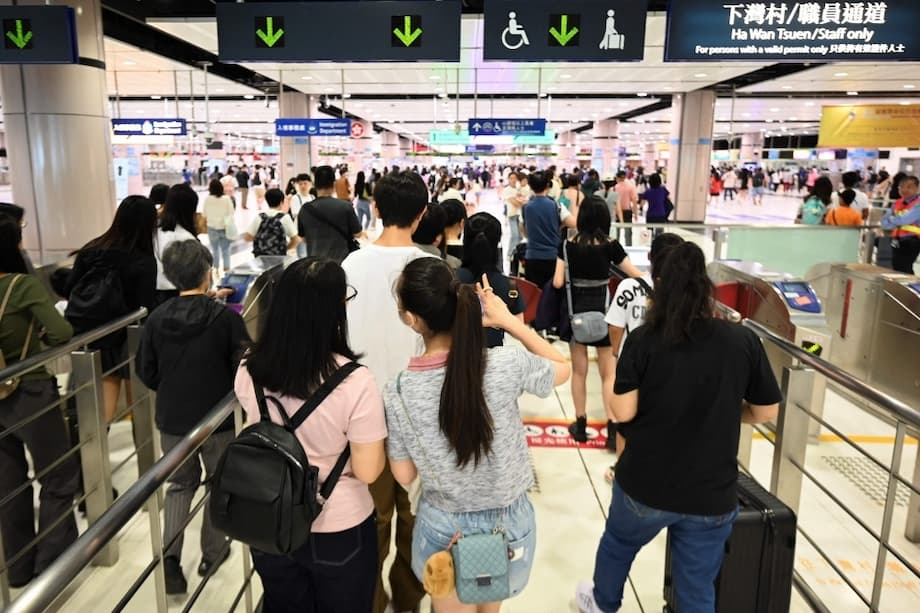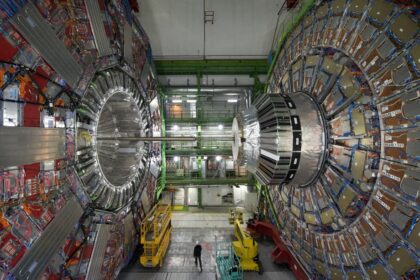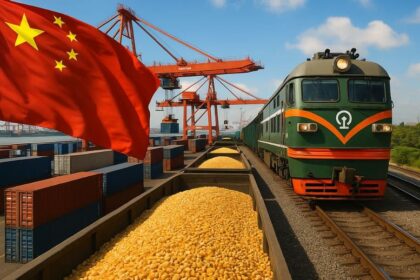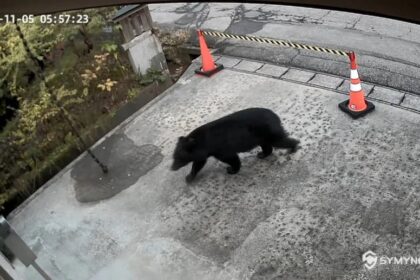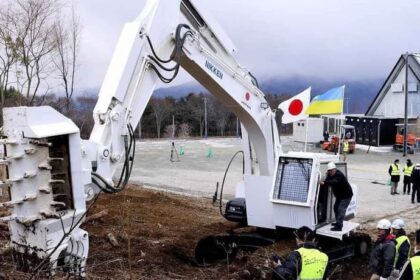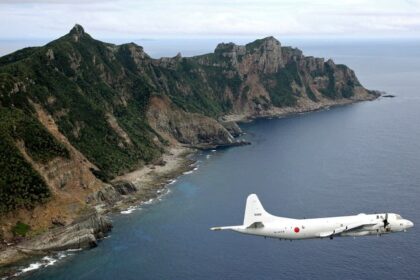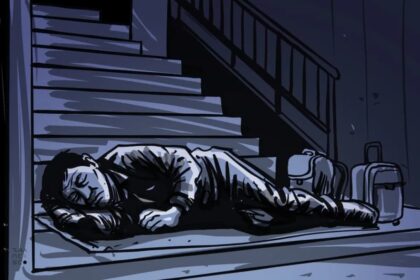A holiday rush that broke records
China kicked off its extended National Day break with a record for the rail system. China State Railway Group counted 23.13 million passenger trips on October 1, the first day of the eight day holiday that also included the Mid Autumn Festival. That was nearly 8 percent higher than a year earlier. It surpassed the previous high of 21.45 million set on the same day in 2024, and well above the 17.13 million tallied in 2019 before the pandemic. The longer window helped concentrate demand. The holiday period is historically one of the busiest times on the calendar. Officials want the surge to lift domestic consumption at a time of soft growth. Many travelers are chasing value. Smaller cities and rural escapes are gaining attention for lower prices and thinner crowds. On social platforms, travelers traded cost saving ideas, from booking village stays in Anhui province to taking overnight trains to avoid paying for a hotel.
Record volumes were not limited to the rails. Transport authorities said the country handled a total of about 2.432 billion passenger trips across the eight days, a record and up 6.2 percent year on year. That worked out to an average near 300 million trips a day. The swell reflected overlapping tourism and family visits and it leaned toward the largest city clusters. The Yangtze River Delta, the Pearl River Greater Bay Area and the Beijing Tianjin Hebei region absorbed much of the traffic. Rail operators added temporary services and airports adjusted schedules to keep flows moving. By early in the holiday, more than 120 million rail tickets had been issued through the 12306 booking platform. The national railway expected more than 19 million trips again on day two. In the Yangtze River Delta alone, forecasts pointed to around 4 million rail passengers that day.
How big was the travel surge?
Measured across all modes of transport, the holiday became one of the largest population movements in modern times. Ministry of Transport data indicate passenger volumes rose across rail, air and waterways compared with last year. Rail journeys increased by roughly 2.6 percent, air passengers by about 3.4 percent and boat travel by around 4.2 percent during the period. The bulk of the travel was concentrated in and between major urban clusters, but the map of movement stretched to nearly every province as families used the rare long break to visit relatives and sightsee.
The railway system remained the backbone. October 1 set the all time single day record with 23.13 million people on trains. Operators added extra high speed and conventional services on popular corridors and extended operating hours at busy stations. Ticketing was largely digital. The 12306 app and website allowed more flexible rescheduling and queuing for returns, which helped keep lines shorter on the ground even when platforms were packed.
Road traffic was immense, with self driving trips and intercity buses pushing expressways and toll gates to peak load at times. Aviation also saw crowded terminals. Airlines coordinated additional flights and swapped larger aircraft onto high demand routes. Real time coordination among transport bureaus and local governments kept the system resilient when weather or congestion created bottlenecks. The combination of added capacity and better digital tools helped turn potential gridlock into orderly flows.
What did travelers spend?
Tourism activity rose, yet spending behavior stayed cautious. The Culture and Tourism Ministry said Chinese residents made 888 million domestic trips during the holiday. Domestic tourism revenue reached about 809 billion yuan, which was roughly 15 percent higher than last year. At the same time, average outlays per trip fell slightly. Based on official data, the average came to about 911 yuan per journey, down about 0.55 percent from a year earlier and the lowest since 2022. That mix tells a clear story. More people traveled and they took advantage of discounts, but many kept a close eye on budgets as they weighed mortgage payments, job prospects and the rising cost of daily necessities.
Tax receipt data point to the same pattern. The State Taxation Administration said the daily average of sales revenue in consumption related industries was up about 4.5 percent year on year during the holiday. Spending on services, from dining to entertainment and leisure, rose about 7.6 percent. Sales of goods grew by about 3.9 percent. Households directed more of their holiday budgets toward experiences and short breaks, while scaling back on some discretionary retail purchases.
An intense price battle shaped the market. Hotel and hostel operators cut listed rates to win bookings in an environment where travelers comparison shop by the minute. Some properties slashed prices by as much as 60 percent. Average bed prices in large cities such as Shanghai and Chengdu fell by more than 20 percent compared with recent holidays. Bookings also shifted. Many travelers waited until the last minute, which made room and ticket prices swing widely. Demand was strongest around the Mid Autumn Festival and eased in the middle of the week. Value oriented trips rose, with road travel and short haul itineraries gaining share. H World Group, which runs more than 12,000 hotels on the mainland, said lower tier cities saw the biggest demand for stays. Its budget and midscale brands, including Hanting and JI Hotel, led occupancy as guests looked for quality at a lower price point.
Where did people go?
Flows split between the most connected urban hubs and a long tail of lesser known towns. Family travel made up a large share, and retirees and parents with children helped push day trips and two or three night getaways. Many travelers picked quieter destinations to stretch their yuan. Posts recommending ancient villages in Anhui and small county seats in Jiangxi and Hunan drew crowds. Practical tips spread quickly, such as riding an evening train to save a night of hotel costs or packing snacks to avoid tourist trap markups. Self driving caravans were a common sight on arterial highways.
Domestic hotspots
The Yangtze River Delta again acted as the country’s busiest hub. Local rail operators projected roughly 4 million passengers in the region on the second day alone and maintained heavy schedules through the week. Shanghai’s main stations worked near capacity, while nearby cities such as Hangzhou, Nanjing and Suzhou absorbed spillover crowds. Scenic counties also benefited. Hotel stays in the porcelain city of Jingdezhen were estimated to be about 30 percent higher than a year earlier. Museums, theme parks and heritage sites reported steady queues, helped by online reservations that smooth entry peaks.
Many travelers also aimed for value in second and third tier cities. Smaller hotel markets offered more availability at lower prices, and dining and taxis cost less than in core metros. That raised the profile of places that often miss the spotlight during peak seasons, and it spread holiday spending more evenly across regions.
Outbound rebound
The extended break and better air links supported a clear rebound in overseas trips. Industry booking data show outbound reservations for the holiday rose about 28 percent from last year and edged above levels before the pandemic. International seat capacity out of China increased by roughly 10 percent year on year. Easing of entry policies helped too. Visa free access to Singapore and Malaysia expanded the short haul map, and new group visa facilitation for South Korea lowered barriers for organized trips. A weak Japanese yen pulled more visitors to Japan. Osaka and Tokyo were top picks, alongside Southeast Asian cities such as Ho Chi Minh City, Kuala Lumpur, Hanoi, Denpasar and Singapore. Long haul travel to Europe also grew, with Rome, Madrid and Paris seeing stronger Chinese arrivals. Premium travel gained momentum as well. Economy class bookings rose sharply, and reservations in premium cabins jumped even faster, reflecting a subset of travelers willing to pay up for comfort on longer routes.
Macau and Hong Kong draw strong crowds
Macau recorded just over 1.14 million visitors during the eight day holiday, according to the Macao Government Tourism Office. That was about 15 percent more than in 2024, and it set a new high for average daily arrivals since records for the holiday began. The city averaged around 143,000 visitors a day. Mainland residents accounted for the vast majority, with more than 940,000 visits from across the border. Hong Kong residents made more than 120,000 trips, while international visitors surpassed 57,000 for the period.
Hotels in Macau were busy. The average occupancy rate reached about 87.9 percent, peaking above 93 percent on October 2. Average room rates across accommodation establishments came in near 1,699 patacas, which was roughly 7.8 percent lower than a year earlier as properties priced aggressively to fill rooms. Visitor flows peaked at 191,176 on Saturday, October 4, then dipped on Sunday to 113,051 due to the impact of Typhoon Matmo, according to preliminary tallies.
Hong Kong also prepared for a holiday surge, with authorities expecting more than 1.5 million passenger trips by mainland tourists over the period. Retailers and restaurants in popular districts geared up for the influx, while cross border transport operators added services to handle the peak.
Why the numbers look different from spending at the movies
Holiday spending did not lift all sectors. The national box office logged about 1.835 billion yuan in ticket sales during the week. That was around 12.8 percent below last year’s seven day holiday total and almost one third lower than the eight day break in 2023. Fewer blockbuster releases were on offer. Many families chose outdoor trips or free entertainment on their phones. The result left cinemas behind even as travel volumes hit records.
One Beijing resident in the financial sector described a familiar trade off. He skipped the cinema and spent time on the road with his family during the break.
“I didn’t watch any films this holiday while usually I watch at least one,” said Liu Tao, a Beijing resident in the financial sector. “I drove to Yangzhou with my wife and son. We didn’t have the time. Besides, there is nothing exciting in the cinema, I’d rather watch short videos on my phone, which is free.”
That kind of choice reflects a wider shift toward lower cost experiences and short trips. It also shows how categories within the service economy can move in different directions during the same holiday.
How infrastructure and policy shaped the holiday
A decade of investment in high speed rail, expressways and large airports underpinned the ability to move hundreds of millions of people each day. Railway bureaus scheduled many additional trains on trunk lines, while airports optimized runway slots and gate usage to reduce delays. The 12306 ticketing platform handled huge transaction volumes and supported flexible exchanges. Real time traffic apps guided drivers around snarls on major arteries.
Local governments amplified the holiday effect with consumer friendly policies. Cities rolled out digital vouchers, promotional events and discounts on dining and attractions. Some places experimented with novel booking tools, such as a credit based travel model in Anhui that let tourists reserve hotels and attractions without upfront payments. Trade in programs for consumer goods continued at the national level, backed by special bond financing, and tourism bureaus pushed cultural festivals, night markets and museum events to boost footfall.
Inbound tourism regained momentum as well. Foreign travelers on domestic flights increased from last year. Cruise terminals in Shanghai and Tianjin welcomed large ships with both inbound and outbound passengers. That brought fresh spending to port cities and highlighted the broader reopening of international travel links.
What it means for the economy
Record mobility shows that household appetite for travel has returned. More people took trips, families bundled visits to relatives with short vacations, and spending on services grew at a healthy clip. At the same time, the search for value was intense. Discounts, package deals and budget hotels drew strong interest. The price competition favored consumers but kept profit margins tight for many operators.
The message for businesses is clear. Travelers want quality at a reasonable price, convenient booking options and flexibility. Budget and midscale hotels, open air attractions and affordable regional cuisine did well. Smaller destinations benefited from better connectivity and social media buzz. That spread holiday revenue away from the most expensive city centers and gave a lift to second and third tier markets.
Analysts describe a cautious consumer still navigating housing market stress and uneven income growth. Stock market gains did not translate into a clear wealth effect in time for the holiday. Even so, the combination of record travel volumes and rising services spending points to resilience in domestic demand. If operators can convert holiday trial visits into repeat business, the momentum from this week of movement could carry into the rest of the quarter.
Quick Facts
- 23.13 million rail trips on October 1, the highest single day total on record
- About 2.432 billion passenger trips across all transport modes during the eight day holiday, up 6.2 percent year on year
- 888 million domestic tourism trips generated about 809 billion yuan in revenue, roughly 15 percent higher than last year
- Average spending per domestic trip was around 911 yuan, down about 0.55 percent from a year earlier
- VAT invoice data show daily average sales in consumption related industries up 4.5 percent year on year, with services spending up 7.6 percent
- Outbound bookings rose about 28 percent from 2024 and exceeded levels before the pandemic, helped by more international seats and easier entry policies
- Macau welcomed just over 1.14 million visitors, a record daily average since the holiday began being tracked
- Travelers shifted toward smaller cities, self driving routes and short haul itineraries, while price cuts kept hotels and transport competitive


